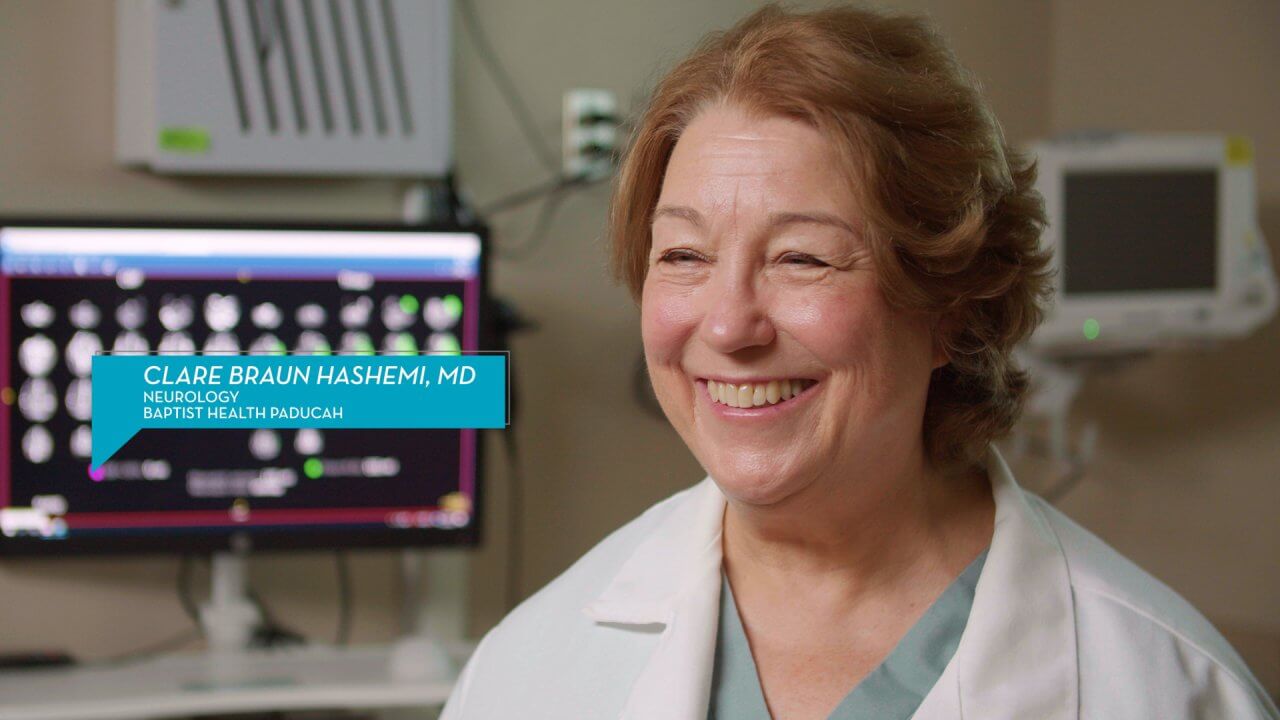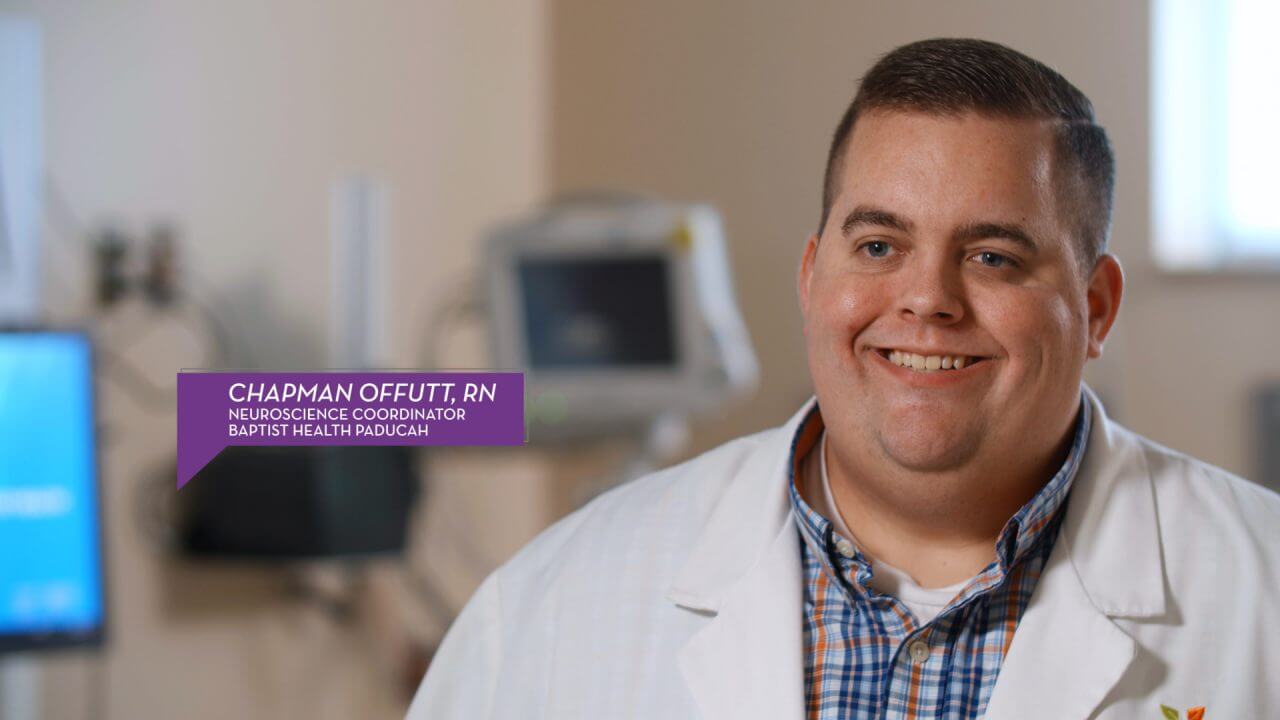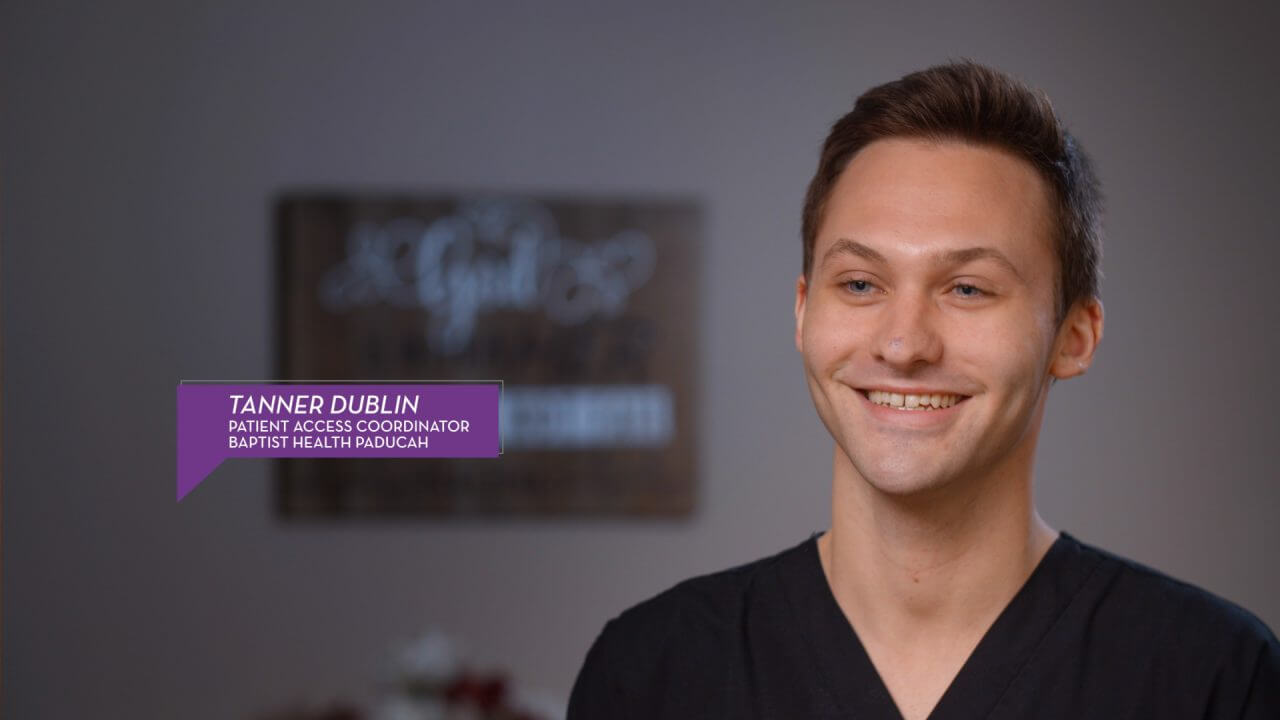Stroke Treatment in Paducah
Baptist Health Paducah: Stroke Treatment
Baptist Health Paducah has a nationally certified stroke center that specializes in the prevention and treatment of strokes. Learn more about your stroke treatment options and hear a survivor’s experience.
Stroke Treatment HealthTalks Transcript
Holly Thompson:
February 16, in the middle night, my 2-year-old, at the time, he woke me up. I immediately felt like there was a heavy weight on my left side, and then I almost immediately went numb. I said, “Something’s wrong. Call 911.”
Joseph Ashburn, MD:
We are a nationally certified stroke center, so anyone who walks in our doors that we have any concern for a stroke, we can activate what we call a “code stroke” and get a CT scan. That actually is a dividing point.
You see, 15 percent of strokes are hemorrhagic, which means a blood vessel has burst, and there is bleeding in the brain. However, 85 percent of strokes are ischemic, which means a blood clot has landed into the brain, and it no longer allows blood flow to go to a portion of the brain causing the symptoms.
In her case, it was the more common type. It was thrombotic, and it was causing her symptoms. We discussed this medication with her called “TPA,” and what it does is it breaks up blood clots. If we don’t give TPA, then they can be left with a deficit the rest of their life.
Holly Thompson, Paducah, Kentucky:
It took about an hour to administer, and after about an hour, I kind of flinched my left leg. That was the first time I had been able to move it.
Dr. Ashburn:
She did fantastic within 24 hours. She had almost full resolution of her arm and leg. Within a month, she was walking around and just doing fantastic.
Ready to take action? Take our stroke risk assessment to estimate your personal risk of having a stroke, and identify your stroke risk factors and how to improve them.



